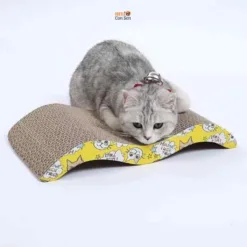New
Creating a Balanced Lifestyle: Food, Fashion, Hygiene, and Play for Happy Pets
Caring for dogs and cats goes far beyond providing shelter. True guardianship means supporting every aspect of their wellbeing—from diet and grooming to emotional stimulation and even fashion choices. A well-rounded lifestyle helps ensure pets live not only longer but also happier, healthier, and more fulfilled lives. This guide explores how nutrition, style, hygiene, and recreational activities come together to create holistic harmony for beloved companions.
Nourishment: Building Health Through Food
Understanding Nutritional Foundations
Food is the cornerstone of vitality. Balanced meals provide energy, repair tissues, and strengthen immunity. Without proper nutrition, even the most pampered pet may face health complications such as obesity, allergies, or lethargy. Unlike wild counterparts, domesticated animals depend entirely on human-provided diets, making informed choices crucial.
Tailoring Diets to Life Stages
Kittens and puppies require protein-rich formulas to support rapid growth. Adults need steady nutrient intake to maintain muscle tone and stamina. Seniors benefit from joint-supporting supplements and easily digestible meals. Recognizing how age influences metabolism ensures each stage is supported appropriately.
Breed-Specific Considerations
Some breeds are predisposed to sensitive digestion or particular health risks. For example, large dogs may develop hip issues if overfed, while small cats might suffer urinary tract concerns without moisture-rich diets. Researching breed-specific requirements helps reduce risks and maximize longevity.
Commercial vs. Homemade Meals
Store-bought options offer convenience, while homemade recipes allow customization. However, preparing meals at home requires careful knowledge of essential nutrients such as taurine for cats or balanced calcium-to-phosphorus ratios for dogs. Consulting veterinary nutritionists helps guardians avoid deficiencies.
The Role of Hydration
Water often receives less attention but is just as vital as solid food. Hydration supports organ function, regulates temperature, and aids digestion. Cats, being natural low-drinkers, may benefit from wet food or water fountains that encourage drinking.
Functional Additions and Supplements
Omega fatty acids boost skin and coat health. Probiotics improve digestion. Glucosamine supports mobility in older pets. Strategic supplementation ensures that diets cover more than just basic caloric needs, actively enhancing quality of life.
Style and Comfort: Fashion Beyond Aesthetics

Why Clothing Matters for Pets
Fashion is not limited to aesthetics—it often serves functional purposes. Winter coats protect against frostbite, while breathable summer fabrics prevent overheating. Footwear shields paws from hot pavement or icy sidewalks. Dressing pets responsibly reflects both love and practicality.
Seasonal Wardrobe Essentials
In colder months, fleece-lined jackets and insulated booties provide warmth. During warmer periods, lightweight cotton vests and sun-blocking fabrics reduce risk of burns. Seasonal adjustments prevent discomfort and health problems tied to weather extremes.
Materials and Safety Considerations
Fabric choice influences comfort. Natural fibers such as cotton allow airflow, while synthetic blends can sometimes irritate sensitive skin. Adjustable straps and soft seams reduce risk of chafing. Guardians should prioritize designs that do not restrict movement or hinder natural behaviors.
Expressing Personality Through Style
Just as humans use clothing to reflect individuality, fashion can highlight a pet’s character. Bold colors, playful prints, or minimalistic tones allow guardians to showcase personality traits—energetic, calm, or adventurous. Expressive styling strengthens the bond between humans and their animals.
The Rise of Pet Fashion Trends
Global markets have witnessed a surge in creative collections—ranging from casual wear to luxury couture. Designers now integrate eco-friendly textiles and sustainable production, reflecting modern values. Fashion thus becomes a statement of responsibility as well as style.
Accessories for Everyday Use
Harnesses, bandanas, and bowties combine function with flair. Reflective gear increases safety during nighttime walks, while lightweight scarves add charm. Accessories enable subtle styling without requiring full outfits, offering flexibility for guardians less inclined toward elaborate wardrobes.
Hygiene and Play: The Path to Complete Wellness
Grooming as Preventive Healthcare
Brushing fur removes dirt, reduces shedding, and promotes skin circulation. Regular nail trims prevent painful overgrowth, while dental care reduces risks of infections. Far from being cosmetic, grooming is essential preventive healthcare.
Bathing Rituals and Coat Maintenance
Dogs often require baths every few weeks depending on activity level, while cats typically need less frequent washing but benefit from occasional professional grooming. Using species-appropriate shampoos avoids irritation and strengthens fur texture.
Ear, Eye, and Paw Care
Neglecting sensitive areas can lead to chronic problems. Ear cleaning prevents infections, particularly in floppy-eared breeds. Eye wiping removes debris and tear stains. Paw inspection identifies cuts, ticks, or embedded objects, ensuring mobility remains unaffected.
Creating Positive Grooming Experiences
Associating grooming sessions with rewards transforms them from stressful events into bonding opportunities. Introducing tools gradually, using gentle handling, and maintaining calm environments all contribute to positive outcomes.
Play as a Developmental Necessity
Engaging toys and activities provide more than fun—they strengthen muscles, sharpen reflexes, and reduce anxiety. Play also satisfies instinctual drives, from chasing to pouncing, which helps prevent destructive behaviors.
Interactive vs. Independent Entertainment
Puzzle feeders, treat-dispensing balls, and smart gadgets offer mental stimulation. On the other hand, simple plush toys or scratching posts allow independent engagement. A balanced mix ensures pets are entertained whether humans are present or not.
Social Play and Human Bonding
Games such as fetch, tug-of-war, or wand-chasing foster trust and deepen relationships. Social play also encourages obedience, as pets learn to follow cues and respect boundaries through guided interaction.
Outdoor Adventures and Safety
Exploring parks, trails, or beaches provides valuable enrichment. However, safety measures—like harnesses, leashes, and identification tags—are essential. Outdoor activities offer variety while ensuring guardians maintain control.
A balanced lifestyle for pets integrates diet, style, hygiene, and recreation into a seamless routine. Food fuels vitality, fashion ensures comfort, grooming safeguards health, and play nurtures both body and mind. Each element supports the others, creating a cycle of wellbeing that empowers pets to thrive. By approaching guardianship holistically, humans ensure that furry companions experience joy, security, and love in every aspect of life.
Expanding the Role of Nutrition in Daily Life
Beyond Calories: Emotional and Behavioral Effects of Diet
Meals influence mood and temperament. High-quality protein stabilizes energy, preventing hyperactivity. Diets deficient in essential amino acids may trigger anxiety or restlessness. Balanced portions not only fuel bodies but also encourage calm behavior.
Feeding Rituals and Routine
Consistency in feeding schedules creates predictability, reducing stress. When pets know mealtimes, they feel secure. Sudden changes in routine may cause digestive upsets or emotional distress. Establishing regularity mirrors natural cycles and reinforces trust.
Raw vs. Cooked Debates
Some guardians prefer raw feeding for closer alignment with ancestral diets, emphasizing freshness and minimal processing. Others value cooked meals for safety and digestibility. Both approaches can succeed if nutrients remain balanced and hygiene practices are strict.
Portion Control and Obesity Prevention
Overfeeding is one of the most common mistakes in urban households. Obesity contributes to diabetes, joint deterioration, and heart disease. Measuring portions with accuracy and resisting the urge to over-treat ensures long-term health stability.
Snacking with Purpose
Treats need not be empty indulgences. Functional snacks enriched with vitamins or dental-cleaning properties transform reward systems into healthcare tools. Choosing purposeful snacks integrates play, bonding, and wellness seamlessly.
Adapting to Allergies and Sensitivities
Some animals develop intolerances to grains, chicken, or dairy. Symptoms include itching, vomiting, or ear infections. Identifying allergens and switching to limited-ingredient formulas reduces discomfort and enhances quality of life.
Fashion as a Blend of Utility and Expression
Cultural Dimensions of Pet Clothing
Across the globe, traditions shape pet attire differently. In Japan, seasonal festivals inspire kimonos for dogs. In colder European regions, functional wool coats dominate. Fashion adapts not only to climate but also to cultural aesthetics.
Comfort Over Decoration
The best outfits prioritize ease of movement. Elastic but breathable fabrics allow running, stretching, and play. Overly decorative garments may restrict natural behavior, creating frustration rather than joy. Guardians must choose apparel that blends form and function.
Adaptive Fashion for Special Needs Pets
Clothing also serves medical roles. Recovery suits replace traditional cones, reducing stress during post-surgery periods. Compression shirts calm anxious animals during fireworks or thunderstorms. Adaptive design highlights fashion’s therapeutic potential.
Eco-Friendly Innovations
The fashion industry increasingly embraces sustainable textiles such as hemp, bamboo fiber, or recycled polyester. Guardians concerned with environmental footprints can dress pets while supporting ecological responsibility.
Accessorizing with Safety in Mind
Collars, charms, and decorative harnesses should never compromise safety. Lightweight materials, quick-release clasps, and reflective surfaces ensure fashion does not come at the expense of security.
Human-Pet Matching Outfits
A growing trend involves coordinated outfits where humans and animals wear similar patterns. While playful, this practice deepens social bonds, presenting pets as true family members.
Hygiene Beyond Grooming Basics
Dental Health as Gateway to Longevity
Oral hygiene extends lifespan by preventing systemic infections. Plaque accumulation can lead to kidney or heart disease. Brushing teeth, providing dental chews, or scheduling professional cleanings safeguards more than just smiles.
Fur as a Health Indicator
Coat condition reflects inner wellness. Shiny, smooth fur signals proper diet, hydration, and care. Dull or flaky coats often indicate nutritional gaps, parasites, or dermatological concerns. Regular grooming doubles as diagnostic observation.
Stress-Free Bathing Environments
Using warm water, soothing voices, and gentle handling transforms bathing from a dreaded chore into a bonding ritual. Aromatherapy shampoos infused with lavender or chamomile reduce anxiety while cleansing.
Parasite Prevention Through Hygiene
Fleas, ticks, and mites thrive in neglected grooming routines. Regular checks and clean coats reduce infestations. Hygiene thus doubles as an early-warning system for parasitic threats.
Seasonal Grooming Adjustments
Shedding cycles change with seasons. Spring and autumn often bring heavy molting, requiring more frequent brushing. Adjusting grooming frequency to natural cycles minimizes household mess and maintains comfort.
Grooming as Enrichment
When combined with gentle massage, grooming stimulates circulation and creates relaxation similar to spa therapy. This physical touch fosters deeper emotional trust between guardian and pet.
Play as Intellectual and Emotional Fulfillment
Role of Curiosity in Cognitive Growth
Exploration through toys builds confidence and intelligence. Curiosity-driven play nurtures problem-solving skills. Rotating games stimulates imagination, keeping minds sharp across all life stages.
The Science of Dopamine Release
Play activates reward centers in the brain, releasing dopamine. This neurotransmitter promotes feelings of joy and satisfaction, making recreational activities crucial for emotional wellbeing.
Balancing Structured and Spontaneous Play
Structured games like agility courses enhance discipline, while spontaneous play—rolling with a ball, chasing shadows—fosters creativity. Both approaches are necessary for balanced development.
Indoor Enrichment for Apartment Living
Limited space should not limit engagement. Climbing towers, window perches, and compact puzzle toys replicate outdoor stimulation within indoor environments. Guardians in cities must innovate to compensate for reduced outdoor access.
Outdoor Exploration and Sensory Diversity
For those with access to nature, outdoor play provides irreplaceable sensory variety. New smells, textures, and sights enrich minds. Structured safety measures ensure exploration remains secure.
Play Therapy for Behavioral Challenges
Interactive play often alleviates issues such as excessive barking, destructive chewing, or aggression. By channeling energy into positive outlets, toys and games transform undesirable behaviors into constructive expression.
Integrating the Four Pillars Into a Unified Lifestyle
Designing Daily Routines
Combining food, fashion, hygiene, and play into structured schedules creates predictability. For example: morning walks paired with breakfast, afternoon grooming combined with relaxation, evening play followed by dinner.
Emotional Benefits of Consistency
Pets thrive on stability. Structured lifestyles prevent anxiety and reduce destructive behaviors caused by uncertainty. Predictable patterns help companions feel secure and loved.
Guardian Education and Responsibility
Responsible guardianship requires ongoing education. Reading veterinary advice, following behavioral research, and staying updated on product safety ensures decisions remain informed.
Technology and Smart Solutions
Apps and gadgets now track diet, exercise, and grooming needs. Automatic feeders, GPS-enabled collars, and smart toys extend guardians’ ability to monitor and enrich lifestyles.
Community and Social Integration
Pet communities—online groups, local clubs, or social gatherings—offer exchange of knowledge, play opportunities, and support. Social connections enrich both human and animal lives.
A Holistic Vision of Wellbeing
When combined thoughtfully, nourishment, style, hygiene, and recreation form a lifestyle of joy and security. Each pillar contributes uniquely, but together they create harmony that elevates everyday living.
A Symphony of Care
Creating balance is not about perfection but about attentiveness. Food fuels, fashion protects, hygiene prevents illness, and play nourishes minds. Together, these elements weave a tapestry of love and responsibility. Guardians who embrace this symphony offer pets more than survival—they offer flourishing.
Nutrition as a Foundation for Holistic Living
Seasonal Adjustments to Diet
Just as humans vary meals with weather, pets benefit from seasonal shifts. Warmer months may call for lighter, moisture-rich foods like cucumber snacks or wet formulas, supporting hydration. Cold months encourage calorie-dense meals that sustain body warmth. Guardians who adapt diets seasonally mirror natural cycles, strengthening resilience.
Hydration Habits and Creative Approaches
Water intake often goes overlooked. Encouraging drinking through fountains, flavored ice cubes, or broths ensures proper hydration. Cats, particularly, may resist still water; circulating fountains trigger instincts, prompting better fluid consumption. Hydration maintains kidney function, joint lubrication, and skin elasticity.
Ethical Considerations in Food Sourcing
Conscious consumers explore ethically sourced proteins—free-range poultry, responsibly caught fish, or plant-based alternatives. Supporting sustainable farming practices not only benefits ecosystems but also aligns guardianship with wider values of compassion.
Supplementation and Functional Additives
Beyond regular meals, supplements such as probiotics, glucosamine, or omega oils target specific needs. Probiotics enhance digestion, glucosamine supports joints, and omega oils enrich coat condition. Thoughtful supplementation customizes care for senior animals, growing juveniles, or recovering patients.
Cultural Influences on Pet Cuisine
Global traditions shape feeding habits. In Mediterranean homes, olive oil enriches meals. In Asian regions, rice often forms the base. Recognizing cultural variety adds depth to nutrition choices while reflecting local heritage.
Fashion as a Reflection of Identity and Practicality
Symbolic Clothing and Celebrations
Clothing extends beyond function into symbolism. Costumes during festivals—such as Halloween outfits or Lunar New Year ensembles—express inclusion of pets in human traditions. Garments transform into statements of belonging within family rituals.
Protection Against Environmental Hazards
Outfits shield against harsh realities: reflective jackets safeguard night walkers, UV-resistant shirts protect light-colored coats under sun exposure, and insulated booties defend paws from icy terrain or hot pavement. Clothing transcends aesthetics, becoming guardianship tools.
Psychological Comfort Through Fabric
Certain fabrics produce calming sensations. Weighted garments create gentle pressure, simulating swaddling. This tactile comfort alleviates stress in anxious animals during thunderstorms or travel. Fabric selection thus becomes psychological therapy.
Inclusivity in Design
Fashion increasingly recognizes diversity in body types. Short-legged breeds, long-bodied cats, or flat-faced companions require special tailoring. Inclusive design ensures no pet feels excluded due to physique.
The Future of Wearable Technology
Smart clothing now integrates biometric tracking. Vests equipped with sensors monitor heart rate, temperature, and stress levels, transmitting data to mobile devices. Fashion becomes not only expressive but also diagnostic, merging aesthetics with health technology.
Hygiene as a Lifelong Commitment
Rituals That Build Trust
Grooming, when introduced gently, transforms into ritualized bonding. Brushing sessions paired with praise teach animals to associate hygiene with affection. Over time, these rituals strengthen emotional closeness, reducing resistance.
The Role of Scents and Aromatherapy
Essential oils like lavender or chamomile, when used safely in grooming products, create calming atmospheres. Fragrance contributes to relaxation while neutralizing odors. Aromatherapy highlights how hygiene intersects with emotional wellbeing.
Preventive Skin Care
Skin often reveals early warning signs of illness. Regular inspection during grooming allows guardians to detect lumps, rashes, or parasites before escalation. Preventive care saves lives by addressing issues at their onset.
Innovations in Grooming Tools
Technological grooming devices, such as self-cleaning brushes or water-efficient bathing systems, simplify hygiene tasks. These tools reduce stress for both guardians and pets while elevating standards of cleanliness.
Environmental Hygiene and Living Spaces
Hygiene extends beyond bodies to environments. Clean bedding, sanitized bowls, and vacuumed floors prevent infestations and maintain comfort. Fresh surroundings contribute as much to wellbeing as direct grooming.
Play as an Anchor for Cognitive, Physical, and Emotional Growth
The Evolutionary Context of Play
Play mirrors survival training. Dogs chasing balls simulate pack hunting, while cats stalking feather wands replicate solitary predation. Recognizing play as instinctive survival rehearsal emphasizes its evolutionary significance.
Socialization Through Games
Interactive activities encourage cooperation. Tug-of-war builds trust in dogs, while shared feather teasers prevent conflict among kittens. Play fosters tolerance and shapes social skills.
Therapeutic Role in Rehabilitation
For recovering animals, play doubles as physiotherapy. Gentle exercises rebuild muscle, restore mobility, and alleviate stiffness. Interactive rehabilitation toys transform recovery into positive experiences.
Outdoor Adventures as Playgrounds
Exploring hiking trails, beaches, or parks diversifies stimulation. Exposure to new terrains sharpens adaptability. Guardians who incorporate outdoor activities enrich both physical fitness and mental resilience.
Lifelong Engagement Across Ages
From playful puppies to serene seniors, toys adapt across stages. Seniors may require softer chewables, while young animals thrive on challenging puzzles. Ensuring age-appropriate play supports wellness throughout lifespans.
Interconnectedness of the Four Pillars
The Lifestyle Matrix
Nutrition, clothing, grooming, and recreation cannot be isolated. A dog nourished with balanced meals but deprived of play remains unfulfilled. A cat adorned in protective fashion but neglected in hygiene faces health risks. Balance arises when pillars support one another simultaneously.
Psychological Wellbeing Through Balance
Harmony across pillars cultivates emotional equilibrium. A clean body, comfortable attire, stimulating play, and wholesome meals generate confidence. Balanced lifestyles nurture not just physical survival but happiness.
Time Management for Guardians
Busy lifestyles demand planning. Combining pillars into daily routines—like rewarding grooming with snacks or pairing walks with clothing use—integrates care seamlessly into schedules.
Economic Perspectives
Guardians must also consider affordability. Budget-friendly alternatives, homemade toys, or DIY grooming routines prove that balance need not demand excess spending. Thoughtful investment outweighs sheer expense.
Case Studies in Balanced Living
-
A senior Labrador thriving on joint supplements, orthopedic fashion, gentle grooming, and puzzle feeders.
-
A rescue kitten overcoming trauma through nutritional therapy, calming attire, hygiene routines, and play therapy.
These examples illustrate how balance heals, strengthens, and transforms lives.
Broader Implications for Society
Influence on Human Health
Caring for pets fosters healthier human routines—more outdoor walks, structured meal planning, and heightened empathy. The balance created for animals mirrors back into human wellbeing.
Sustainability in Pet Care
Choosing eco-friendly fashion, biodegradable grooming products, and sustainably sourced nutrition contributes to global ecological responsibility. Balanced lifestyles ripple outward into planetary stewardship.
Community Building
Balanced lifestyles encourage community interaction through parks, fashion events, grooming workshops, or training classes. Pets become catalysts for social connection and collective growth.
Ethical Evolution of Guardianship
Shifting perspectives redefine animals from property to family. Balanced care symbolizes this transition, embedding ethics into everyday practice. Guardianship evolves into stewardship of life itself.
Conclusion: Balance as a Living Philosophy
Creating harmony among food, attire, hygiene, and play is not a one-time task but a dynamic philosophy. It requires attentiveness, creativity, and empathy. Guardians who weave these pillars into daily life gift their companions not only health but joy. This harmony echoes into human lives, shaping families and communities where compassion and balance prevail.

 Cat scratching board relieves stress and prevents scratching sofa and furniture
Cat scratching board relieves stress and prevents scratching sofa and furniture 